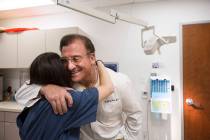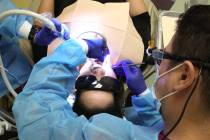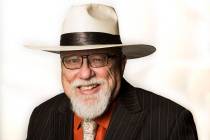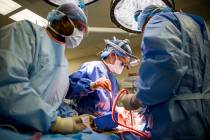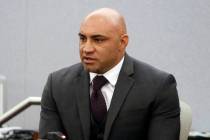Placing blame for doctor shortage
It’s a topic that’s become a part of the national conversation, almost as much as unemployment and same-sex marriage.
Yes, even at dinner you hear talk about the physician shortage, a number expected to reach 90,000 in the United States by 2020.
Public policy experts have noted the problem for decades, but now that the Affordable Care Act, also known as Obamacare, is about to extend health care coverage to 30 million more Americans, people worry that it will be even more difficult to have their hemorrhoids lanced in a timely fashion.
Will there be fights over who gets to see the proctologist first?
How could a country that prides itself on responding to the market forces of supply and demand have had too few MDs?
Let’s put the blame where it belongs: We’ve been in this mess for years because of the greed and power of the American Medical Association, which the late Nobel Prize-winning economist Milton Friedman called the “strongest trade union” in the U.S.
Dale Steinreich, a scholar who studied the AMA at the libertarian Mises Institute, has noted that while the AMA pushed a “suitable education” for doctors at the organization’s 1847 founding, the group was also then “much more open” — even in publications — about its real goal: “building a government-enforced monopoly for the purpose of dramatically increasing incomes.”
Research shows the AMA decided to go about that by lobbying politicians (the AMA has long been a key financial contributor to politicians) to believe that the organization had the country’s best health interests at heart by restricting entrance to the profession through closing and holding down the number of approved medical schools.
The tactic worked — for MDs, Mark J. Perry, a scholar at the American Enterprise Institute, said in a recent interview. The median salary for docs in the United States is now about $275,000, more than double that of physicians in Europe and Japan, he noted.
Perry’s research also shows that in 2010 there were 131 medical schools in the U.S., 21 percent fewer than the 166 medical schools of 100 years ago, even though the U.S. population increased 300 percent.
Incredible.
Turned away are an astounding 57.3 percent of medical school applicants, the vast majority with superior academic backgrounds.
Disgusting.
(Perry doesn’t mention the nation’s 29 schools of osteopathic medicine. Of the 875,000 licensed physicians in the U.S., 812,000 are MDs and 63,000 DOs. The difference? Osteopaths also learn manipulative techniques to diagnose and treat.)
The AMA’s Council on Medical Education was actually created in 1904 with the goal of closing half the medical schools in existence, according to Steinreich, who pointed out that a report engineered by the council was critical of the quality of many schools, yet the author, John Flexner, was neither a doctor nor an expert on medical education. He later admitted he knew little about medicine or how to judge medical education. Still, in just three years, 25 medical schools were closed on the basis of his report and students were reduced by 50 percent at remaining schools. In six years, 35 schools were shuttered.
In a statement sent to me last week, Dr. Jeremy A. Lazarus, an immediate past president of the AMA, wrote that his union has always been “supportive” of medical school expansion and added that an accrediting agency it co-sponsors increased the number of schools from 125 in 2006 to 141 in 2013.
He also said the AMA now pushes for an increase in class sizes and for additional residency slots to train docs.
Isn’t it wonderful what happens when Americans finally scream to politicians for more doctors?
Criticism prompted change before.
Perry found that between 1970 and 1984 there was an increase in medical school graduates that brought the number of new doctors from four per 100,000 Americans in 1970 to nearly seven per 100,000 by 1984.
Yet since that baby boomer push, the number of graduates has been flat while the population grew, so the number of physicians per 100,000 declined to 5.3 per 100,000 in 2008, about the same ratio as in 1974. Recently, the ratio of graduates per 100,000 increased to 5.56.
What Perry points out is that if the ratio of graduates per 100,000 Americans had stayed at the 1984 level of nearly seven, nearly 22,000 new doctors would be graduating annually. “The cumulative increase in medical school graduates ... would mean that we would have 84,000 additional physicians today,” he wrote last year in his blog, “Carpe Diem.”
So could the shortage of 90,000 physicians everyone now talks about in 2020 have gone away?
Oh, well. Maybe next century the AMA will allow the U.S. to have as many medical schools as it had in the early 1900s.
Contact reporter Paul Harasim at pharasim@
reviewjournal.com or 702-387-2908.








